From Psychology to Precious Metals: Steve Jinks’ Approach to Teaching Precision, Patience, and Perseverance
With over 20 years of industry experience and a background in psychology and social work, renowned fine jeweller and educator Steve Jinks brings a unique perspective to teaching and the world of jewellery-making. We sat down with Steve to explore how his journey into the trade has shaped his teaching philosophy, blending empathy, mentorship, and technical precision. In our conversation, Steve shares his perspective on the transformative impact of the Goldsmiths’ Centre’s Jewellery Foundation Programme. He explains the importance of a holistic, workshop-centered training approach, which fosters a passion for detail, building self-confidence, and learning from mistakes. Drawing from his experience, including mentoring for the international competition WorldSkills, Steve explains how training programmes need to evolve with the industry while preserving traditional skills.
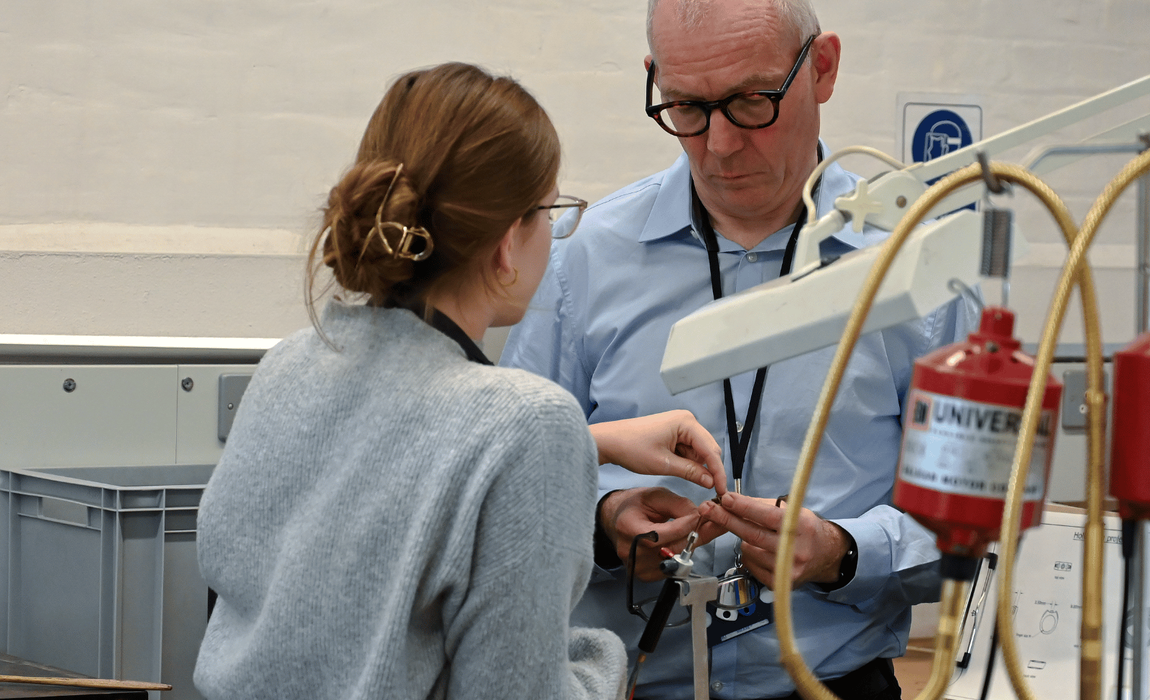
From Psychology to Precious Metals
I entered the industry through a non-traditional route. I have a degree in psychology and a background in social work, but I changed careers in my mid-20s because I really wanted to learn a skill. Over the years, I’ve found that my previous experiences working with people have been invaluable, both in my work with jewellery and in teaching. Knowing how to support people in high-pressure situations has been incredibly useful.
I still love the process of taking something that’s 2D and turning it into 3D. I’m endlessly curious about that transformation. Whether it starts with a little sketch or a carefully designed drawing, you begin with a sheet of metal - cutting, bending, soldering - and create something tangible and three-dimensional. I can get completely lost in that process. I also love working with materials and the fact that what I make often takes on symbolic meaning for others. It’s not just about monetary value; it’s about the personal meaning someone attaches to a piece. I might make something that someone wears for the rest of their life and then passes on. Not many things have that kind of lasting significance.
It could be an engagement ring or even a simple, inexpensive silver ring. If it’s inherited from a loved one, its value transcends the material. I’ve often met people who say, My mother gave me this ring before she passed away, and I want to keep it. It might be worth very little or a great deal - it doesn’t really matter. There’s something unique about jewellery that makes it timeless. The materials themselves are timeless too - they’re worked on, passed down, and then find a new life elsewhere. I’m still fascinated by that aspect of the craft.

In a workshop, if you get stuck, you can ask your master or tutor for guidance. In a competition, you learn a lot about yourself - your ability to get through challenges, problem-solve, push past fatigue, and keep going when things go wrong. These are invaluable skills that serve you well throughout your career.
Teaching in a High-Pressure Environment
For 12 years, I helped train and select young people to compete internationally at WorldSkills, mentoring them during competitions and also serving as a judge. WorldSkills is a unique experience. Competitors work under extreme pressure, particularly with time, to complete challenging set projects. When preparing someone for a competition, the focus is less on teaching technical skills - they’ve often acquired a lot of those already - and more on fine-tuning their approach. It’s largely about how they work independently.
In an international competition, they’re expected to sit and make something over four days without being able to ask for help. In a workshop, if you get stuck, you can ask your master or tutor for guidance. In a competition, you learn a lot about yourself - your ability to get through challenges, problem-solve, push past fatigue, and keep going when things go wrong. These are invaluable skills that serve you well throughout your career.
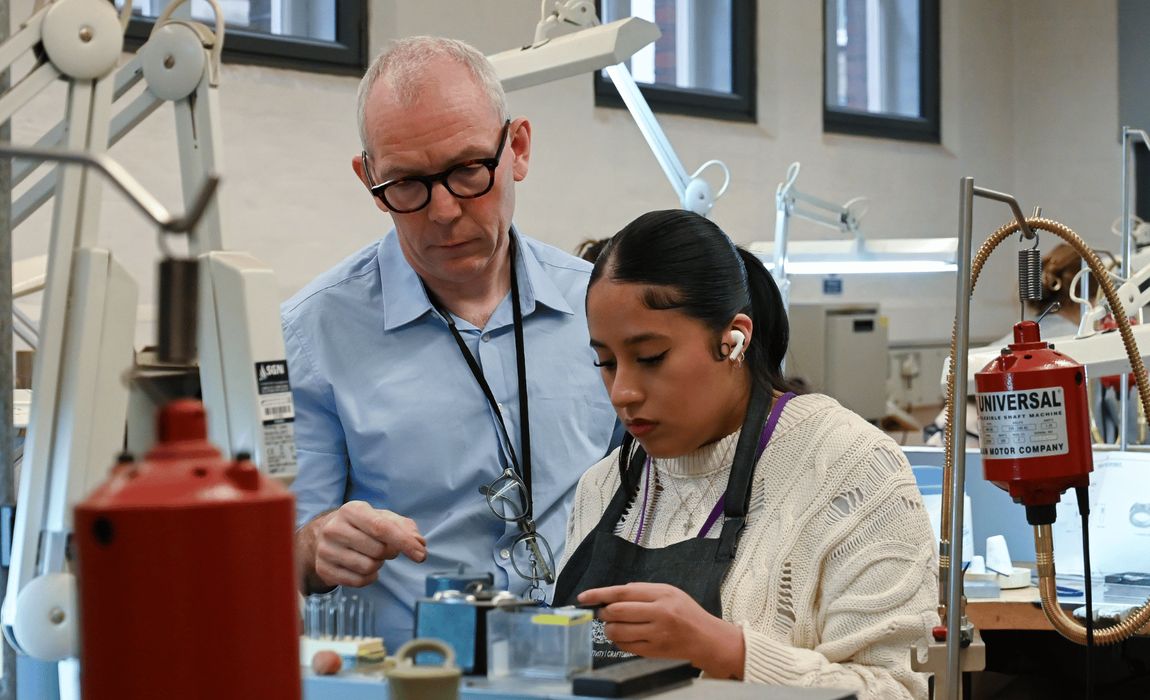
The young people I worked with were usually midway through their apprenticeships. As a tutor, a lot of my work involved refining technical skills to a higher level while also challenging those softer skills. By the time a competitor arrived in Geneva or wherever the event was held, the goal was for them to face the situation with confidence.
It was a fascinating process, partly because the UK didn’t have the resources that other countries had. We had to find ways to reach their level with about a tenth of the time and funding. As a trainer, it was an interesting challenge - helping competitors develop their problem-solving abilities, cope independently, and refine their techniques. I would deconstruct everything they did to see if it could be done more efficiently or to a higher standard. Sometimes, it was as small as adjusting body position; other times, it was about rethinking the technique altogether.
Building Foundations for Excellence
Breaking down skills is something I’ve carried over into everyday teaching. For instance, with soldering, I’ll examine every single step of the process - from how to hold the torch to how the solder flows - so that students can refine their approach. It’s easy to forget, having done it for 30 years, how complex these skills are for a beginner. You have to break them down into their components, much like learning to ride a bike or drive a car.
Skills only become second nature once they’re built on a strong foundation. You start simple and gradually increase complexity. For example, when teaching soldering, I’ll begin with a basic task: soldering two pieces of metal together and understanding how to manipulate the torch. Once that’s mastered, we move on to more complex projects. By the summer, those basic processes should be intuitive, allowing students the freedom and confidence to tackle more advanced work.
This approach not only helps students master technical skills but also instils a discipline and problem-solving mindset that can be applied more broadly. With a good foundation, students can adapt to a range of challenges, understanding why something isn’t working and how to fix it. That methodology creates a solid base for success, whether in competitions or everyday work.
Unlocking Potential Through Skills
“What I’ve come to understand is that our job is really about helping young people find their potential. It’s also about helping them build the self-belief needed to unlock that potential.”
Their path might lead them into a traditional jewellery workshop, like mine did. It might take them towards becoming a designer, a silversmith, or even into education - or perhaps something entirely different. By the end of the Goldsmiths’ Centre’s Jewellery Foundation Programme, my aim is to provide students with technical knowledge and to help them develop the confidence to pursue a variety of careers. I believe we all have the potential to do more than one thing.
The skills we teach are challenging to learn, and developing them requires a particular mindset and discipline. One of the difficulties students often face is understanding the time it takes to master these skills. To reach a high level in fine jewellery typically takes around 10 years - five years of apprenticeship training, followed by another five years honing those skills to a higher standard. It’s hard for young people to grasp that such a commitment is worthwhile until they’ve completed a course like this. By the end, they see it’s achievable, but they also recognise it requires significant time and investment.
This journey isn’t linear. Learning any hand skill comes with moments of rapid progress followed by plateaus. It requires intrinsic motivation - you have to do it for the love of it. I couldn’t have done it just for the money; it’s too challenging for that. But it’s also incredibly rewarding, and there aren’t many people who can do it. If you can stick with it, this can be a deeply satisfying industry to be part of.
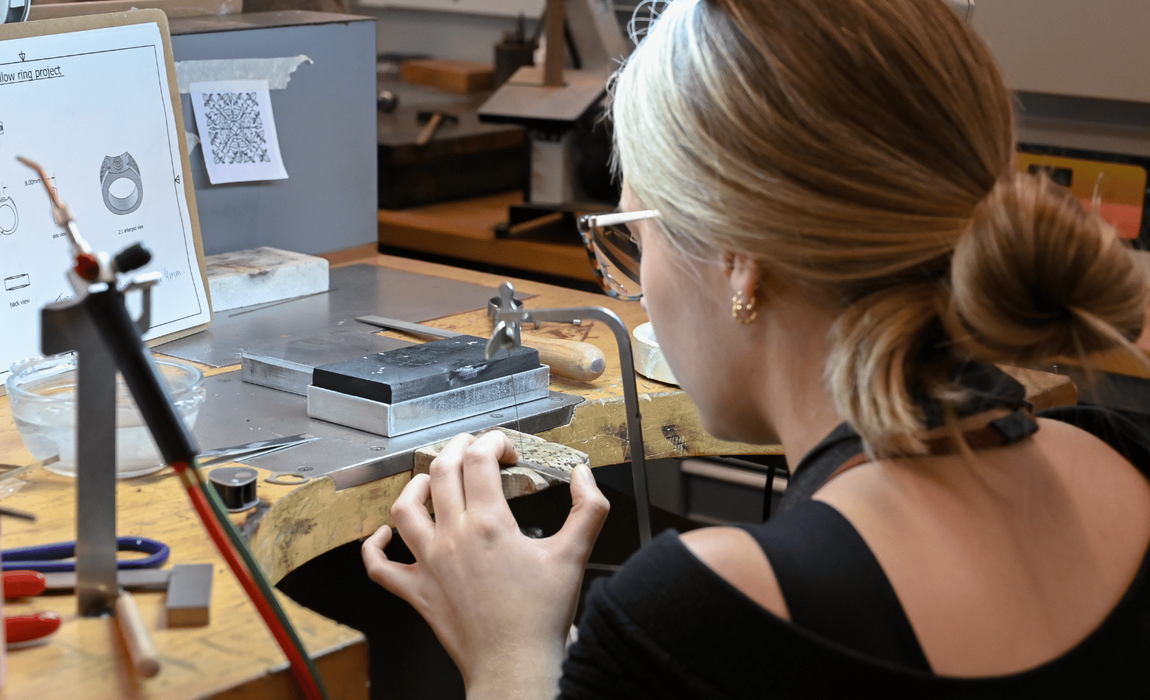
Mistakes as Milestones: Turning Setbacks into Strengths
Learning technical skills is challenging. It typically requires a lot of repetition and a disciplined approach. Trainees also need to accept that they will make mistakes, but often, mistakes lead to the quickest learning. I’ve found this particularly difficult for the current generation, who seem, in my experience, to be quite afraid of making mistakes. To address this, I’ll sometimes deliberately make mistakes while teaching to normalise it and show that mistakes aren’t bad - they’re opportunities to learn.
Another challenge is developing the confidence to think independently. I encourage trainees to think about what they’re making and to come up with their own solutions. Many are hesitant to do this, possibly due to fear of failure, but the ability to problem-solve and work independently is crucial. That’s why the competition work I’ve been involved in is so valuable - it’s all about fostering those skills. We use exercises like group problem-solving or pressure tests, where students are tasked with making something within a set time, to simulate real-world scenarios. These activities prepare them for the realities of the industry so they’re less intimidated when they enter the workplace.
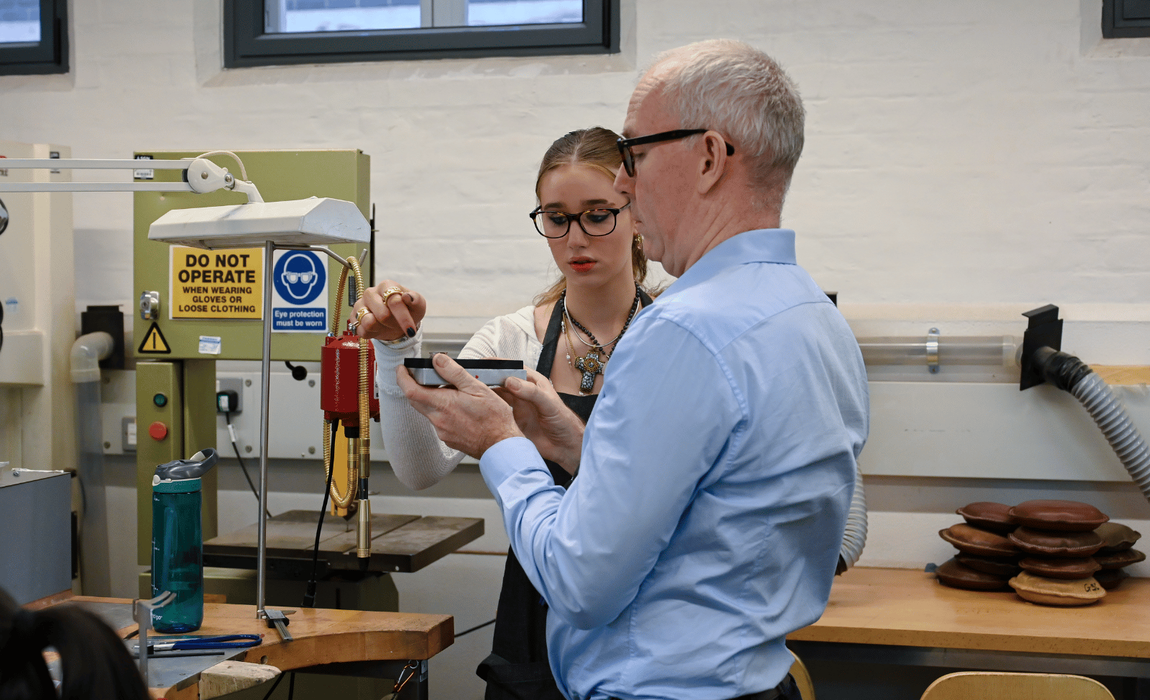
One of the gifts of teaching for me is that I learn just as much as the students. It makes me reflect on how I learned and think about how to convey concepts as effectively as possible. In this industry, we have less and less time to train people, so at the Centre, we’re fortunate to have the freedom to design courses without the restrictions of mainstream environments. Personally, I’m always evolving my teaching methods, aiming to reach better outcomes more efficiently.
Normalising mistakes early in the process is one approach I use. If students can view their mistakes constructively rather than critically, it helps them progress. When students start here, they’re often very self-critical, which is an important quality in jewellery-making, but it can also be debilitating. We focus on helping them see mistakes as learning opportunities, asking why a mistake happened rather than just repeating it. Even after nearly 30 years of making jewellery, I still make mistakes - it’s simply part of the process.
Building Confidence Through Creativity and Mentorship
This generation seems to have a heightened sense of self-criticism which may stem from factors like social media or previous educational experiences, which can lead to higher levels of anxiety. Creativity, particularly hands-on making, can be a powerful tool for overcoming these fears. It allows people to "play" while learning new skills, which is both specific and tangible. For instance, when students spend a day working on soldering, they often start unsure of themselves but leave with smiles because they’ve achieved something tangible. It’s a confidence boost to see their own progress in such a clear and immediate way.
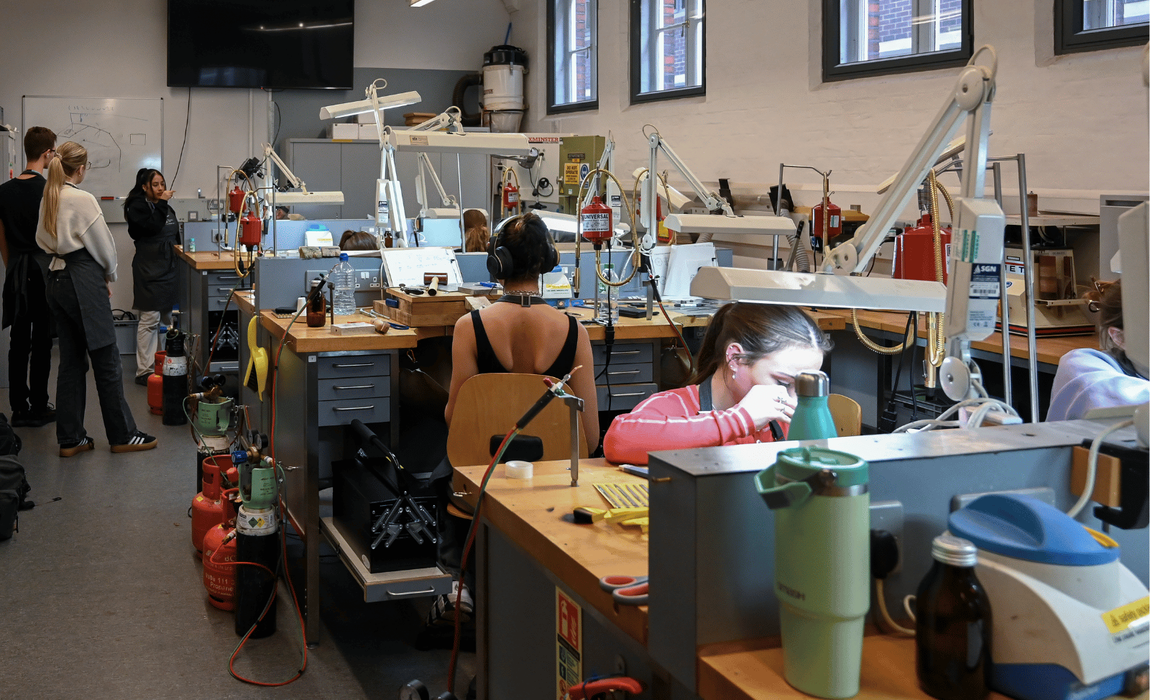
One of the main strengths of training at the Goldsmiths’ Centre is that the class sizes are much smaller compared to a typical university class. At university, class sizes are often larger. Here, we have just 10.
One of the main strengths of training at the Goldsmiths’ Centre is that the class sizes are much smaller compared to a typical university class. At university, class sizes are often larger. Here, we have just 10. This allows me to focus quickly on developing technical hand skills. It also gives us the opportunity to mentor students; building relationships and supporting them in other areas, such as cognitive skills. We work with them on managing pressure, problem-solving, and building self-confidence.
Mentorship differs slightly from teaching because it’s more individual. It allows you to really understand a student’s strengths and weaknesses, helping you guide them more effectively. Mentoring isn’t just about teaching skills - it’s also about exploring what motivates them. Motivation is critical because learning these skills is difficult, and without strong motivation, it becomes even harder.
For me, mentoring is about helping someone find their strengths. When you discover something you’re good at, you build confidence. That confidence fosters interest and passion, which, in turn, increases the likelihood of success.
Advice for Aspiring Jewellers
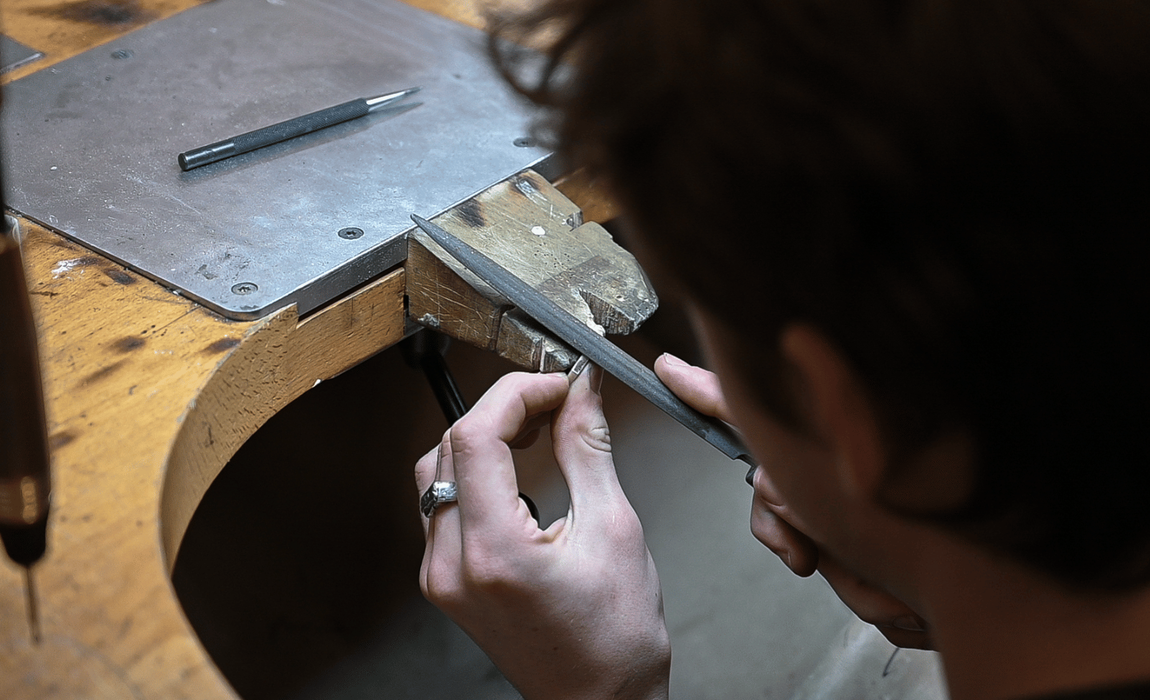
Before going into the industry, it’s a good idea to test the waters. Try spending time in a workshop if you’re interested in making, take a short course, or do something that gives you a sense of what the work involves. Find something you’re good at. There are so many different roles in the industry—it doesn’t have to be making. It could be in sales, design, management, or any number of other opportunities.
What I often suggest to students is to find what you enjoy and what you feel good at. If you feel good at something and enjoy it, you’ll have the motivation to sustain the training needed to excel. Enjoying the skills is really important. You can’t just look at something and think, I like the look of that. You have to try it and experience it. Also, don’t be afraid to change direction - don’t feel tied to one path.
How the Industry Must Innovate to Thrive
I’d not describe the industry as being in trouble, but it does face challenges. There’s a very traditional model of training that has worked well for many years, but I’m not sure it’s as effective now given the changes in technology and the challenges young people face in their teens and early twenties.
I think the industry needs to adapt its training methods and possibly its work practices to reflect these changes. That said, there’s still a wealth of knowledge here in the UK that isn’t celebrated enough. We face competition from foreign manufacturing and suppliers, but there’s significant depth and tradition in the UK that we can continue to build on.
The industry has been sustained for centuries - the Goldsmiths’ Company for instance, has a 700-year history, which is a testament to the success of the traditions and methodologies that underpin it. I believe we can continue to offer something meaningful and valuable, adapting as necessary while maintaining the essence of what makes this industry unique.
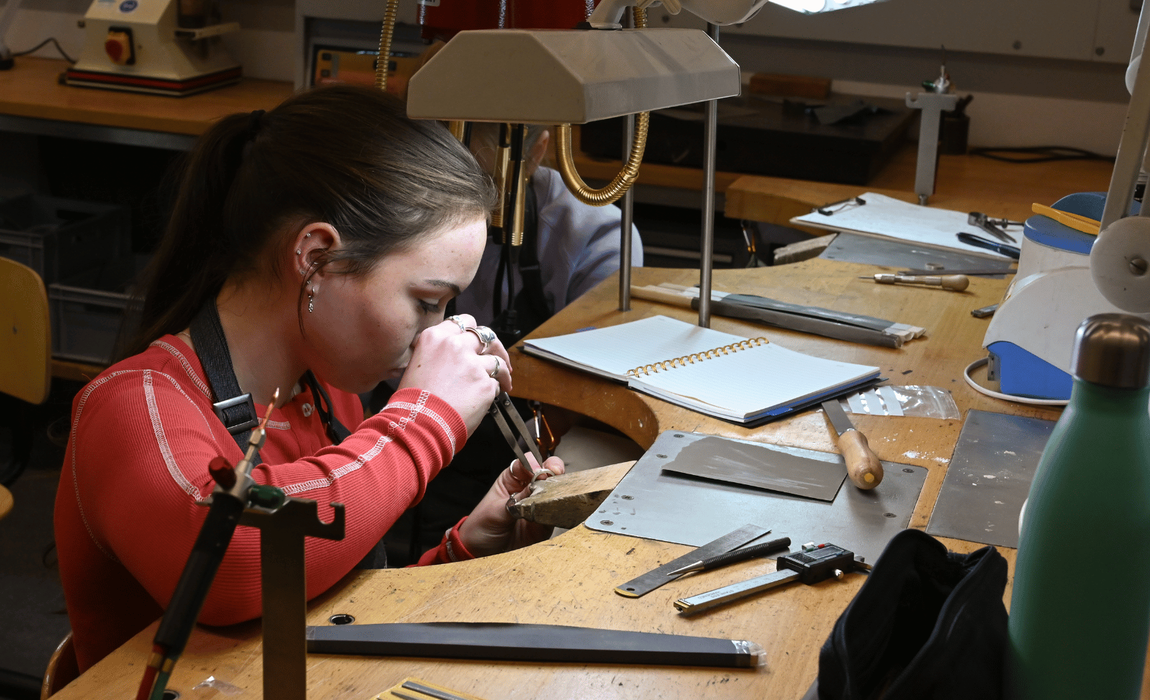
There’s still a wealth of knowledge here in the UK that isn’t celebrated enough. We face competition from foreign manufacturing and suppliers, but there’s significant depth and tradition in the UK that we can continue to build on.
Adapting to Change: The Growth of the Jewellery Foundation Programme
While the core focus of the Jewellery Foundation Programme - helping young people build a foundation of skills to take into industry - has remained consistent over the past 10 years, the specific needs of industry have shifted. For example, what industry requires from a young person entering an apprenticeship today might differ slightly from ten years ago.
We’re currently consulting with industry to understand these changes better. I’ve been looking at developments in the part of the industry I work in, and we’re adapting how new students are taught to reflect these needs. However, we’re careful not to lose the traditional knowledge that has been a cornerstone of the trade for so long. There’s always a risk that technology could overshadow these skills, so it’s about finding the right balance - imparting traditional skills while also preparing students in a way that ensures they can hit the ground running when they enter the workforce.
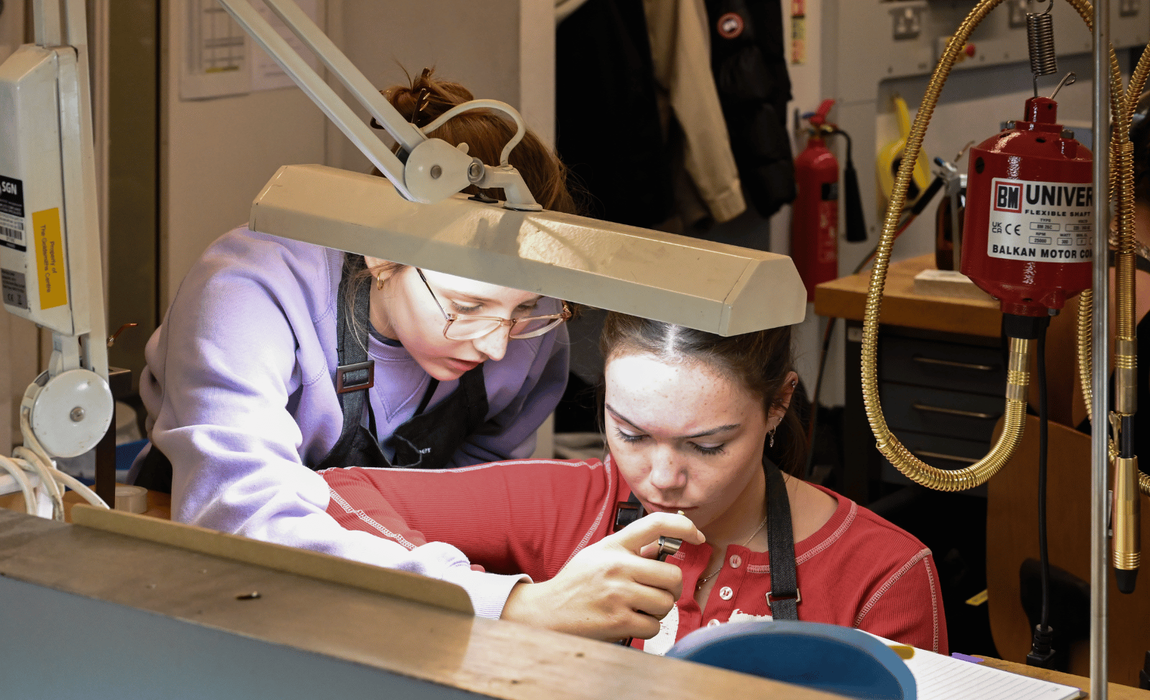
I also spend time speaking with alumni - former students who’ve completed the Foundation Programme - to gather their insights. I ask about their experiences, what they would do differently if they could go back, and how they would recommend improving the course for future students. We’re collecting all this feedback and using it to inform changes.
On a personal level, I’ve been reflecting on how my experiences in preparing people for competitions could influence my teaching here. For example, I’m considering how to incorporate lessons from that work to train students more effectively. Additionally, we’re looking at how to support students with some of the broader challenges they face, such as anxiety, low self-esteem, or a lack of confidence. The goal is that, by the end of the course, they feel ready to step out into the world.